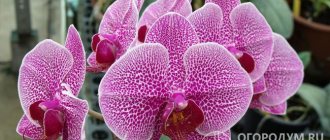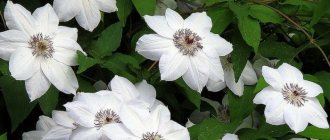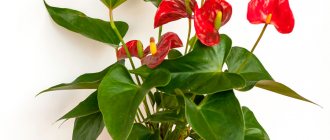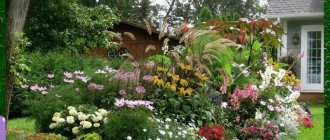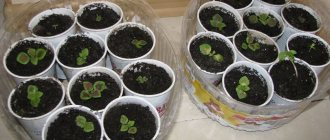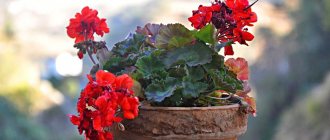It seems to many that all the beautiful flowers in the garden require especially careful care and special cultivation techniques. To have a luxurious flower garden in your garden, and at the same time not to spend a lot of time and effort on painstaking care - is this realistic? Yes, this is possible, but only if you plant certain flowers that do not need special conditions and care. Let's look at what beautiful and undemanding flowers can be sown as seedlings this season. In this article you will find a catalog of unpretentious annual, biennial and perennial flowers with names, descriptions of the sowing process and photographs.
Which flowers to choose for growing at home
When choosing flower seeds, you should consider several very important conditions:
- first of all, flowers, of course, should be attractive to you;
- second condition: the shape and color of the flowers should be in harmony with your home interior. Harmony always has a beneficial effect on the emotional background in the house;
- third condition: be sure to take into account the degree of illumination of the place in which the flowers will be located. It is not always possible to provide them with what they need. Therefore, when you choose seeds, carefully read the plant's light requirements.
When purchasing, pay attention to the availability of GOSTs, expiration date and manufacturer - it must be reliable.
What indoor plants can you grow yourself from seeds?
Almost all beautifully flowering houseplants produce seeds, which means they can be grown at home. Seeds of home flowers can be purchased at a specialty store or collected directly from the flower.
What flowers are easy to grow from seeds at home? Many gardeners agree that you can easily grow from seeds: pelargonium (geranium), begonia, orchid, gloxinia, cyclamen, passionflower, abutilon, adenium.
But at home you can grow not only flowering plants, but also flowers with decorative foliage: these are various palm trees (Washingtonia, Hamerops, Howea, Hamedorea), dracaena, Chinese bamboo, coleus, cyperus, bottle tree.
Various succulents can also be grown from seeds: cactus, agave, aloe, hechtia, bergeranthus, sansevieria, gasteria, haworthia. These plants are considered highly ornamental, and their seeds are very rare.
When plants are grown from seeds, they become more adapted to the conditions in a particular apartment, that is, to light, heat and humidity. That is why those plants that were bought and brought into the house as adults often die due to a sharp change in conditions.
There are other positive aspects to growing indoor plants from seeds, for example, the splitting of decorative features. And, as a consequence, the difference between the grown individuals and the mother. From the seeds of home flowers you can grow unique geraniums, begonias or roses.
Preparing soil and containers for flowers
Before sowing seeds, prepare the container and soil. Clay pots perfectly allow air to pass through to the roots, but pathogenic microflora easily accumulate in them. Therefore, plastic containers are an ideal option for flowers. Rinse the containers thoroughly with hot water and baking soda and rinse with cold running water. Read on the seed packet for soil requirements. Different plants may have different requirements. But most often, ready-made soil or a mixture of sand and peat serves as excellent soil.
Soil for pets
It is best to germinate seeds in specialized soil for a specific plant. You can buy it at a houseplant seed store. This is the easiest and most reliable option, but there is another option - prepare the soil yourself. To do this, you need to take sand, peat and garden soil in equal proportions. A drainage layer of 2 cm is placed on the bottom of the container. This can be expanded clay, vermiculite, pebbles, sandstone, broken brick. The soil itself is poured on top, which then needs to be well moistened.
If you prepare the soil mixture yourself, it must be disinfected before sowing. You can place the soil in a heat-resistant container and bake it in the oven for 3-4 hours, or pour boiling water over the soil, or treat it with a manganese solution. The finished soil is placed in containers, leaving 2-3 cm to the top edge.
We germinate the seeds
To increase germination and strengthen the future plant before sowing, treat the seeds as follows: wrap them in gauze and dip them in water with an added growth stimulant. The soaking period depends on the size of the seeds - from 1 to 3 days.
Situations often arise that after planting the seeds in the ground, all the deadlines have passed, but the seedlings do not appear. To avoid this, when preparing seeds for sowing, stratify them. Simply put, put them in the refrigerator at a temperature below 5 degrees and keep them there for several days.
If the seeds have a thick seed coat, it may prevent them from germinating. In this case, soak them in water and carefully peel off the thick skin.
Preparation of seed material
You can purchase already prepared seeds treated with growth stimulants, nutrients and pest protection agents. You can buy them in a specialized store or order seeds of indoor flowers by mail. Such seeds do not require additional preparation. In addition, they should not be soaked.
Planting material collected independently requires special preparation: rejection, sorting, disinfection, stratification, heating, soaking and germination. If the seeds of domestic flowers have a dense shell, then they will need scarification, that is, it must be carefully destroyed.
The preparation of seeds begins in December-January, so that they can be sown in February-March.
Sow seeds and care for crops
If the seeds are small, then they are not deepened into the soil, but only laid out on its surface. Spread them evenly and spray them with a well-dispersing spray bottle, cover with film or glass. Medium-sized planting material is planted to a depth of 1-2 mm, large - to a depth of 1-2 cm. If you follow the folk wisdom accumulated over centuries, then the depth should be equal to the diameter of the seed material.
If you soak the soil well with water before and after planting and cover it thoroughly after sowing, then watering before emergence will not be necessary. But, if the soil still becomes dry, then spray it carefully. Do not allow large amounts of condensation to accumulate on the film. Many large drops are a sign of overheating. Remove excess moisture in a timely manner and lightly ventilate the crops.
What unpretentious perennial flowers to plant as seedlings: names, photos
With perennial flowers, which are unpretentious in care and growing conditions, things are even better. After all, as is the case with annuals and biennials, you do not need to plant seeds for seedlings every year (or every two years). By sowing them once in your garden plot, you can enjoy their beauty for many years without any hassle.
Gaillardia
Gaillardia has very attractive, colorful, cheerful blooms. The perennial is drought-resistant, unpretentious, and thrives in flowerbeds exposed to full sun. The plant self-sows very abundantly. Flowering of gaillardia begins at the end of June and ends at the first frost. The place for growing should be sunny, open, and the soil should be light, loose, drained, and dry. Gaillardia does not need special care, even watering is needed rarely and in small quantities (it does not tolerate waterlogging).
It is optimal to sow gaillardia for seedlings in March, although many summer residents also practice earlier sowing (in January, even December). You can plant seeds either in a common bowl (at a distance of 2 cm) or in individual cups, peat tablets, or cassettes. Sowing is superficial, the seeds are only slightly pressed into the substrate.
Lavender
Beautiful evergreen lavender is suitable for growing in dry, well-drained, infertile soils in a location with very good light. The plant boasts a high decorative value and a pleasant aroma. At the same time, the perennial practically does not need care.
Lavender is sowed for seedlings in the second half of February or early March (but many plant it even in December and January). The seeds are pre-stratified in the refrigerator for 1.5 months. You can sow in a common bowl with a gap of 2 cm, on top they are covered with a layer of sand or soil 3 mm thick.
Aquilegia
Aquilegia (or Watershed, Orlik) is very unpretentious, capable of growing on the site with virtually no intervention from the gardener. At the same time, it reproduces well by self-sowing, so they can quickly grow throughout the garden. However, when choosing a place to plant a plant, you should choose exclusively shady and semi-shady places in the garden with loose, moist, fertile soil.
Aquilegia is sown for seedlings in March. But at the same time, you need to stratify the seeds in advance for 1-1.5 months, for example, in the refrigerator on a damp cloth. The container for growing seedlings should be deep; a tall bowl will do, or better yet, plastic or peat cups. When sowing, 1-2 seeds should be placed in separate cups; when planting in a common bowl, they are distributed at a distance of 2-3 cm. They are covered with a 5 mm layer of earth on top.
Periwinkle
Periwinkle is a very amazing perennial herbaceous evergreen plant that creeps along the ground. The ground cover plant is distinguished by both decorative leaves and beautiful flowers. It is distinguished by incredible vitality and durability, capable of maintaining green leaves even in cold winter. You can plant periwinkle in your summer cottage and not worry about it at all! He feels fine both in strong shade and in bright sun, but he will be more comfortable in a shady or semi-shaded place. Loose, fertile, well-drained soil is most suitable, but can grow in almost any soil.
Growing periwinkle from seedlings is a rather painstaking task, but if you do everything correctly, you can easily achieve success. The seeds are sown in a common bowl with a gap of 4 cm from each other, covered with a 1.5 cm layer of soil on top.
Loosestrife
Merlin is a very hardy, unpretentious plant, suitable for those gardeners who are not ready to spend time caring for flowers, but want to see bright accents in the garden. If you immediately plant a perennial in an area with suitable conditions, then you don’t have to worry about the plant at all. It is best to plant loosestrife in sunny areas with moist, nutritious, light soil.
The planting of loosestrife seedlings is usually done in March. Small seeds are evenly distributed over the surface of the substrate. Sowing is superficial, so they only need to be lightly pressed into the ground.
Rudbeckia
Rudbeckia is a very bright, perky perennial flower (sometimes grown as an annual). It will look great on the site of any dacha or private house. The perennial is quite resilient and undemanding. However, it prefers open places with good lighting. It also does not tolerate drought well, so do not forget about systematic moderate watering. Reproduction of this plant is easily carried out by self-sowing.
You can plant rudbeckia for seedlings at the end of March or at the beginning of April. It is convenient to sow in a common bowl in grooves having a distance of 2 cm from each other and a depth of 0.3 mm. The grooves are filled with earth.
Yarrow
Common yarrow is one of the most unpretentious perennial flowers. It is drought-resistant, frost-resistant, and undemanding to watering. The only thing that needs to be done for this plant is to water it periodically in hot and dry weather. In all other respects, he is completely undemanding! For planting, it is recommended to choose sunny areas with well-drained, permeable, loose soil. By the way, the perennial grows on any soil, even very poor soil. Flowering begins in late spring and ends in late summer.
It is also worth considering that the plant grows strongly by self-sowing, so you will have to control the plant so that it does not take over everything around it (for example, immediately pick off faded inflorescences to prevent the seeds from falling off).
It is better to plant yarrow seedlings at the end of February or at the beginning of March. It is most convenient to use a wide and not very high drawer. A distance of about 2-3 cm should be maintained between the seeds. They are covered with a 2 cm layer of soil on top.
Heliopsis
Heliopsis is a cheerful, sunny flower that prefers dry, well-lit places. It is undemanding, drought-resistant, and winter-hardy. Growing this perennial is easy, so it is suitable even for a novice gardener.
You can plant heliopsis seedlings in March, but first you need to place the seeds in a damp cloth in the refrigerator for stratification for 1 month. When planting, it is recommended to maintain a distance of about 5 cm between them, then they are covered with a 1 cm layer of soil.
Mallow
Mallow (or hollyhock, alcea) is often grown as a biennial flower because after the 2nd year it becomes less decorative. A tall plant is planted along fences, walls of buildings, and garden paths. For all its decorativeness, mallow is completely unpretentious.
Sowing hollyhock roses at home is done in early March. It is better to immediately choose deep individual containers (cups, cassettes). 2-3 seeds are placed in one container (and then the strongest seedling is left), covered with a 1 cm layer of soil.
Nivianik (leucanthemum, garden chamomile)
Nivyanik (or Leucanthemum, Garden Chamomile) has magnificent white flowers with a yellow center. Garden chamomile is loved by many gardeners in our country due to its delicate appearance. Leucanthemum prefers sunny places with fertile, moist soil.
Nielweed is sown at home in early March. In terms of choosing containers, there are no special preferences; it can be either a common box or individual cups. The seeds are buried 1 cm, the distance between them is 3-4 cm.
Echinacea purpurea
Echinacea purpurea is heat-resistant, drought-resistant, and frost-resistant. It is better to plant the plant on fertile, loose soils, in an open, well-lit place.
You can plant Echinacea purpurea at home in the second half of February. It is necessary to prepare the seeds by soaking them in a damp cloth with a solution of a growth stimulator, or at least in regular warm water until they bite. In a common box, you need to make grooves 0.5 cm deep at a distance of 3 cm from each other and arrange the seeds at the same distance as the grooves. Sprinkle a 1-2 millimeter layer of sand on top.
Lupine
Beautiful lupine is completely undemanding and unpretentious. It is unpretentious to soils, but prefers well-lit places. If perennials grow in a windy place, it is recommended to tie a long stem to a support.
Lupine seedlings are planted at the end of March and April. Planting material must be pre-soaked before biting. An important feature of growing lupine seedlings: plants need nitrogen-fixing bacteria, so it is recommended to mix the seeds with crushed tubers from the roots of old lupins. The seeds are laid out on the substrate at a distance of 5 cm, sprinkled with sifted soil on top with a layer of 5 mm.
Ammobium
Ammobium is extremely unpretentious and drought-resistant. Many people grow it as an annual. Its flowering is abundant and long: from mid-June to late autumn. Able to grow and bloom normally even on very poor soil (including on a substrate with a high sand content). Feels best in sunny, warm areas with sandy, loose soil.
It is better to plant ammobium seedlings in early April. A soil mixture with added sand should be used. In a common box, the seed is laid out at a distance of 2-3 cm, and the top should be covered with sand or soil (layer thickness about 3 mm).
Arabis
Arabis is ideal for decorating rock gardens, alpine slides, and rocky ground. The flowering of the perennial is modest, but interesting and sophisticated. The ground cover plant grows well in full sun, dry, sandy, loose soil.
It is optimal to plant Arabis at home in early April. The substrate must contain sand and small stones. Arabis seeds are evenly distributed in a bowl, covered with sand or soil on top (literally 3 mm).
Gypsophila
Aerial gypsophila (or Kachim) can add elegance, lightness and tenderness to any flower garden! Hardy and frost-resistant crop. A good location for baby's breath: sunny, open, dry, well-drained soil with lime.
It is necessary to sow gypsophila for seedlings at the end of March. For this purpose, low general containers are used, the seed is evenly distributed over the surface, and sprinkled with soil (2 mm) on top.
Bluebell Carpathian
Carpathian bellflower is loved by gardeners because of its elegant, delicate flowers. It is undemanding in care, characterized by winter hardiness, resistance to pests and diseases. Flowering lasts about two months, occurring in the first two months of summer. Ideal for growing on an alpine hill. Prefers open, sunny areas; it is optimal to choose well-drained, slightly alkaline or neutral soils.
Bellflower seedlings are planted throughout March. It is convenient to sow small seeds in a common bowl, after mixing them with river sand. The planting is shallow, so it cannot be covered with soil.
small petals
Small petal (or Erigeron) is distinguished by interesting flowers that have very thin petals. They are easy to care for, unpretentious and decorative, so they are often planted in garden plots in sunny places.
Small petal seeds are sown superficially for seedlings in March in a common container. They are only lightly pressed into the soil.
Doronicum
The sunny flower Doronicum is completely unpretentious. Looks interesting in single plantings and in compositions with other flowers. Flowering from mid-May to mid-June.
Sowing Doronicum at home is carried out in April in plastic cassettes. 2-3 seeds are placed in one cell to a depth of 3 mm. Later, you should leave one strongest sprout in one cell.
Important! Despite the general unpretentiousness of the listed flower crops and low maintenance requirements, it must be remembered that plants cannot be completely deprived of care. Indeed, in this case they will bloom inconspicuously or may even die. It is necessary to water regularly, and, if possible, not to ignore fertilizing, loosening the soil surface, and removing weeds.
If you sow seedlings and then plant unpretentious flowers in open ground, you can get a beautiful garden without unnecessary hassle and effort. Fortunately, there is a large selection of annual, biennial and perennial plants that have bright and beautiful flowering, but do not require painstaking and careful care.
Plant care
As soon as the shoots appear, remove the film or glass and open them slightly for several hours, gradually accustoming the flowers to the light and surrounding atmosphere. Some plants require picking to strengthen the root system. Their number is also different for different plants - 2-3 or 4-5. During picking, flowers are transplanted into an earthen mixture. It is more nutritious and favorable for full development. Read about the number of picks and the composition of the soil on the bag of seeds or in specialized literature.
Remember that for the first 2-3 days, pruned seedlings should not be exposed to direct sunlight and should be kept cool.
Our online store "Seeds by mail" offers you a wide selection of flower seeds that can satisfy the most varied tastes and the most varied requirements for growing conditions. We will not only send you seed material, but also provide detailed instructions on agricultural technology for any plant.
What annuals can be grown in one season?
First, let's talk about annual plants that will bloom in the same season in which they were planted.
Alyssum
This flower culture is famous not only for its inflorescences of deep colors (white, pink, lilac), but also for its delicate honey aroma.
Alyssum sprouts in less than a week, and begins to bloom in just 1.5 months.
This color is quite hardy and unpretentious to growing conditions.
The only thing is that during periods of drought it will have to be watered quite often.
Growing alyssum from seeds
cornflower
Decorative cornflowers take a little longer to bloom.
It will take about 55 days from the moment the shoots appear before the inflorescences appear.
Cornflower is good because it blooms for a very long time and withstands periods of drought.
Therefore, it can be sown if you do not have the opportunity to regularly water the flowers.
Decorative cornflower can produce not only blue, but also yellow, white, lilac and pink flowers.
Nemophila
A low flower with pale blue, graceful petals folded in a saucer.
The inflorescences themselves are not too large - a maximum of 3 cm in diameter.
Nemophila is sown using the nesting method in late spring - early summer.
The seeds germinate fairly quickly.
Flowering begins at the end of June and continues until September.
sweet pea
This flower crop can be used to decorate front gardens, gazebos and hedges.
Sweet peas can grow up to 1.8 m.
Seeds germinate in about 1.5 weeks.
Sowing can be done as early as April.
Peas bloom in about 2.5 months and continue to bloom until the first frost.
Flowers on the windowsill all year round
Flowering plants “from the garden” have been planted, the design has been decided, the plants have been selected, the seeds have been purchased, now all that remains is to extend the summer! Flowering lasts 1-3 months. By the end of it, the seedlings you have grown are ready to flower. Stimulating budding, for example with the drug "Bud", will push your plants to adulthood. Autumn and winter flowering may begin later than expected for this variety, but with the help of applied efforts - feeding, stimulation, regular watering and artificial lighting, garden flowers will bloom until warm days.
For example, a violet on a windowsill can bloom almost all year round. With the onset of spring, you can move the flowers to the outside of the windowsill of the house or plant them in the garden.
The circle closes - the flowers are again in the open air, near the house.
Sowing seeds
When planting seeds, the sowing depth is very important - the germination of the seeds depends on it. The sowing depth will depend on the size of the seeds themselves. If the seeds are more than 2 mm in diameter, then to calculate the sowing depth you need to multiply the diameter of the seed by two. At the same time, if the soil is heavy, then the depth can be slightly reduced, and if the soil is light, the depth can be increased slightly.
Small seeds, up to 2 mm in diameter, do not need to be covered with soil at all. On the contrary, some plants germinate in the light, such as pelargoniums and petunias.
Very small seeds of indoor flowers are mixed with sand for sowing. You can also mix such seeds with a lighthouse crop, for example, radishes. Radishes sprout in 4-5 days and will clearly define rows of flowers. When the flowers begin to sprout, the radishes need to be removed from the rows.
Beautiful flowers of perennial lobelia
I have never seen such lobelia before. Usually grown as an annual, compact, with small flowers, often ampelous. And here there is such beauty - in the bush.
This is a perennial lobelia , frost-resistant, American selection. The height of the bush is up to 80 cm. If grown through seedlings, it will bloom in the first year.
If I find seeds, I will definitely plant them.
SOW DIRECTLY INTO THE GROUND
Most climbing plants (morning glory, ornamental beans, dolichos, ornamental pumpkins) have large seeds that are sown directly into the ground.
Lianas not only decorate the garden, but also allow you to decorate outbuildings. For those who like to grow two-in-one plants, beautiful and useful, we recommend sowing purple coneflower, sage, snakehead, lofant, monarda, hyssop, and St. John's wort. They have healing properties, and also have a beautiful appearance, worthy of the most exquisite flower garden.
And it is absolutely impossible to imagine an estate without our dear hollyhocks, Chernobrivtsev (Tagetes) and mattiola. Tagetes are the most popular flowers in Ukraine. They are unpretentious, tolerate transplantation at any age, grow in the sun and partial shade, and are content with scanty watering.
Today, a great variety of tagetes varieties have been created, in all sorts of colors - from white to dark burgundy.
One thing has remained unchanged: you probably won’t find a flower garden without these amazing hard-working flowers that bloom tirelessly until frost.
Marigolds are also beautiful flowers.
Durango mixture - anemone-type flowers. American selection.
Type - rejected. The height of the bushes is 30 cm, the diameter of the flowers is 6 cm.
Snow blizzard - erect marigolds.
The height of the bushes is 35 cm, the diameter of the flowers is 6-8 cm.
I only recently learned about the existence of white marigolds, well, almost white, but the yellow tint still remains. I never tire of reminding you of them, in case someone else doesn’t know.
There are several varieties. I bought Vanilla for myself and saw Eskimo. Against their background, the white blizzard is earlier and in group plantings it looks neater and better aligned.
It has already been written in the comments that white marigolds grow into some kind of indistinct disheveled plants. They probably haven't been selected yet

